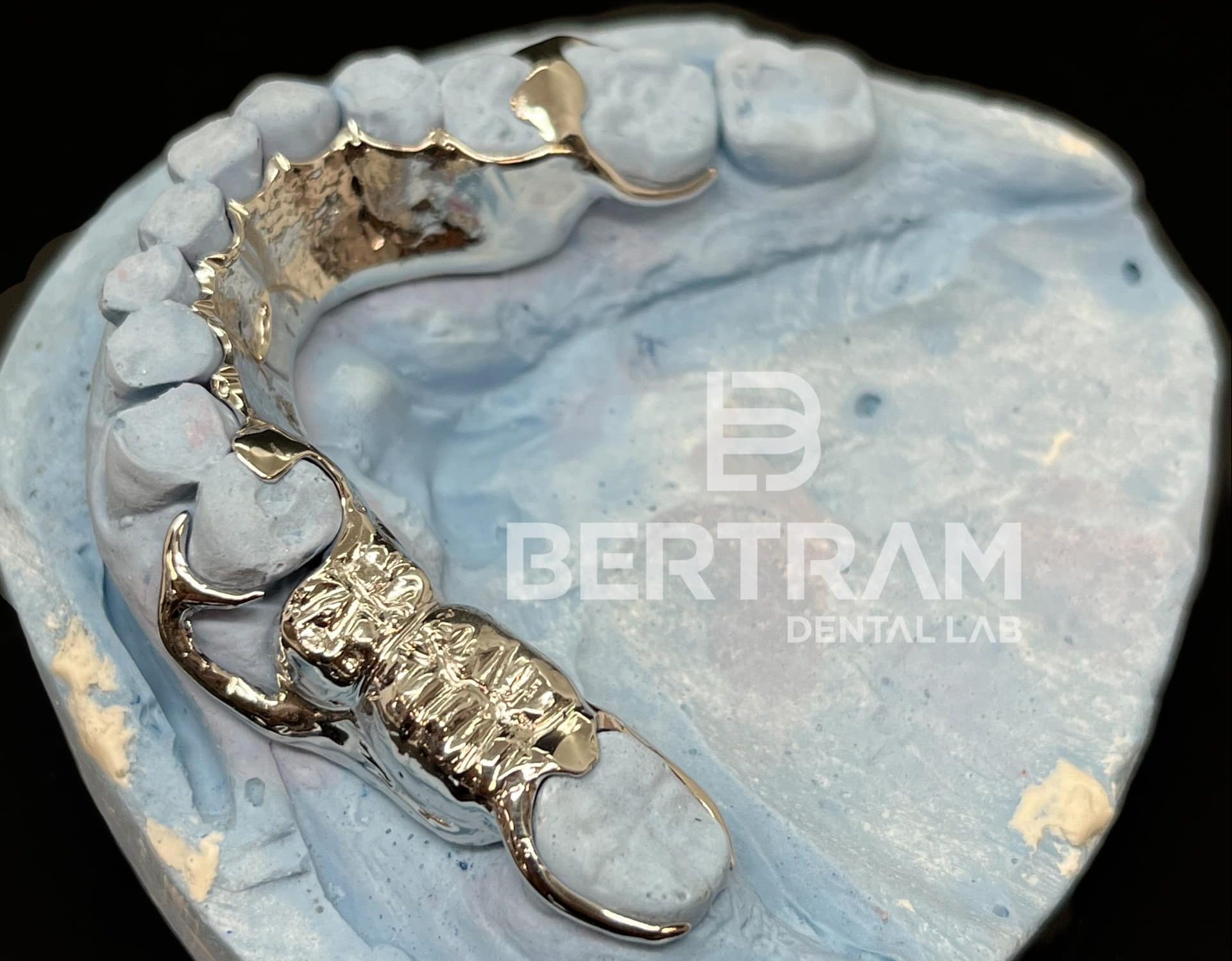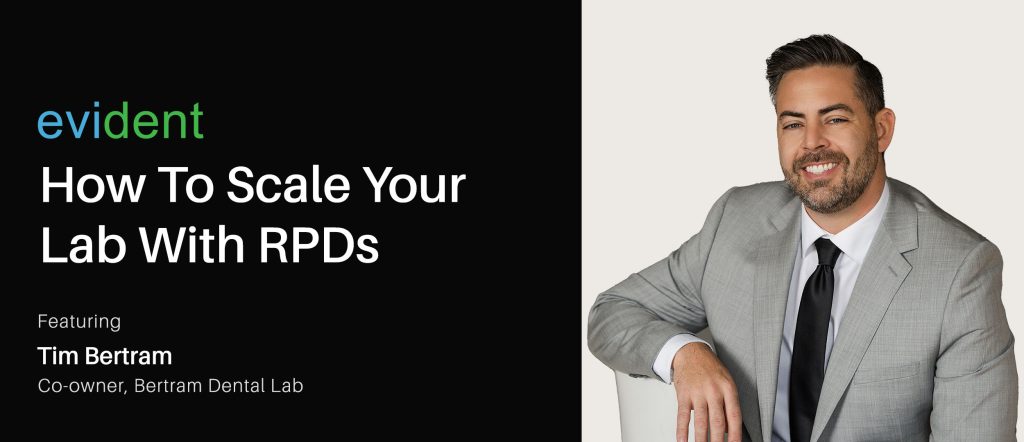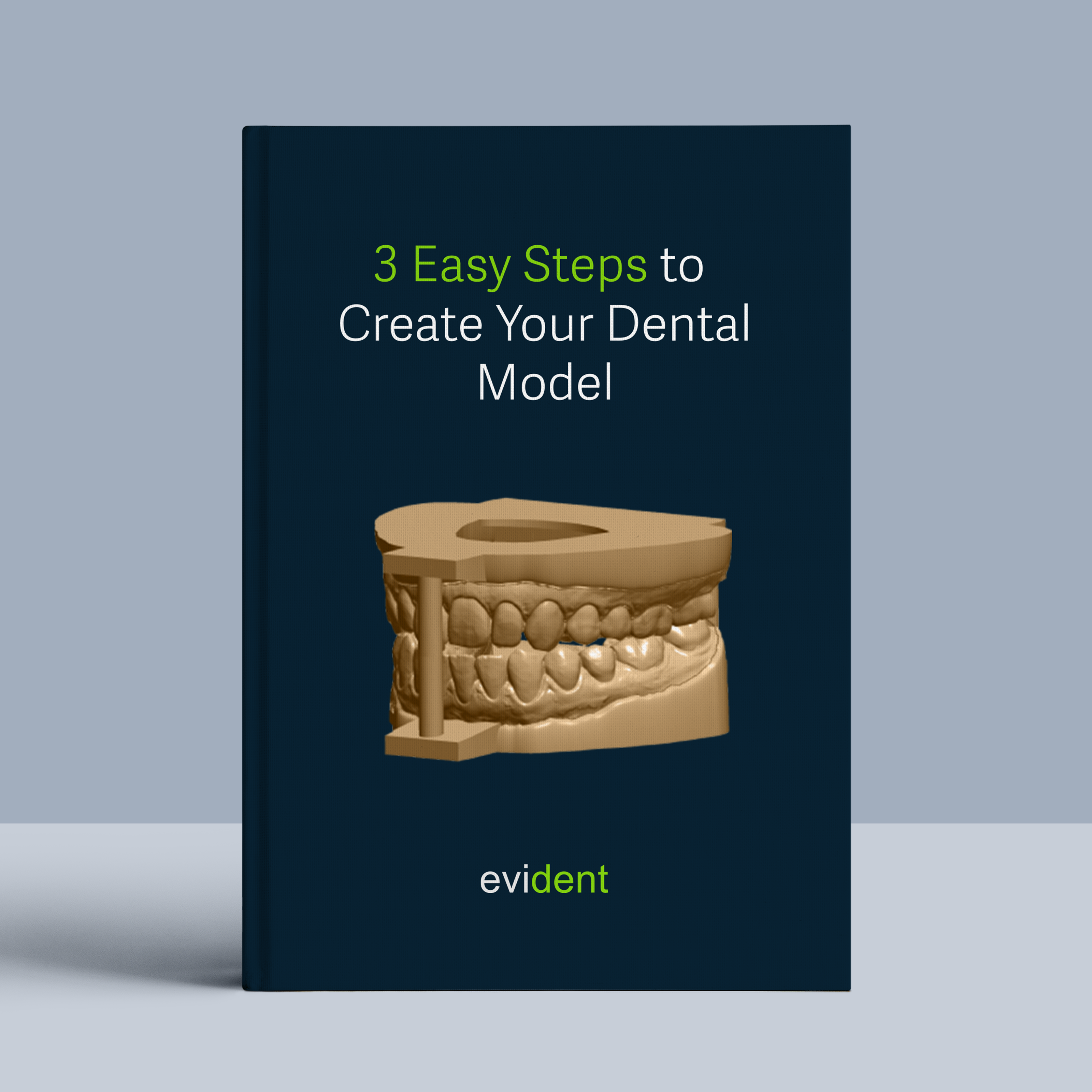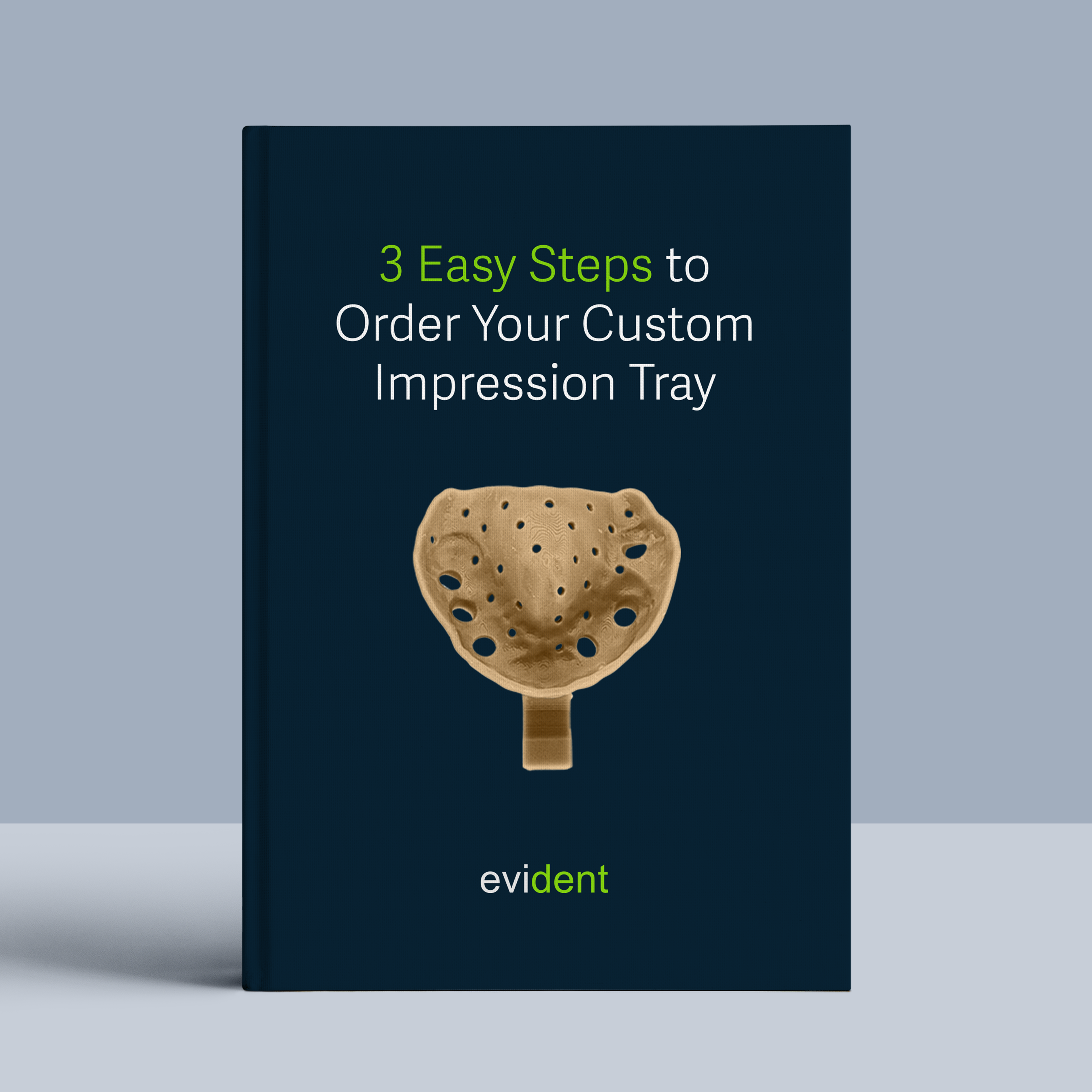
Removable partial dentures (RPDs) are a budget-friendly option for patients to regain all their teeth. Where fixed, All-on-X cases are more on the higher end of dental restoration, RPDs are a more accessible solution for patients.
Because of this, they are a great service that dental labs can provide for dental clinics, regardless of the season.

Tim Bertram, co-owner of Bertram Dental Lab, mentions that RPD production for his dental lab hasn’t slowed, especially during the onset of COVID. He’s confident that in the upcoming recession, RPDs will continue to sell. You can learn more in his webinar interview with Evident here.
This suggests that RPD will serve as a consistent source of business for dental labs, small and large, as well as dental clinics. Here’s how you can scale your lab with RPDs:
Get the Right Equipment
Creating RPDs is a service that labs won’t see a decline in business for. As mentioned earlier, RPDs are your basic, non-ostentatious dental restoration that everyone may soon need. So, having the equipment to create RPDs can give your lab an edge over those that don’t create RPDs.
The interesting thing about creating RPDs is that once you have the tools needed to create them, you can create pretty much any metal restoration too, such as titanium crowns and fixed implants.
The common components of RPDs are a metal framework, an acrylic resin base, and artificial teeth. With that said, there’s a bunch of equipment that dental labs need in order to manufacture RPDs.
Casting Machines
Casting machines allow labs to convert a hand-made or 3D-printed wax model into a fully metal restoration.
First, a mold is created from the wax model. Then the casting machine heats a metal alloy, typically chrome-cobalt or titanium, to its melting point and injects it into the mold. Once the metal cools and solidifies, the mold is broken away, leaving behind a metal casting that is a replica of the wax model.
Relative to digital dentistry, casting machines are a more traditional way of creating RPD frameworks.
SLM Printers or Mills
Alternatively, you can use the more cutting-edge dental mills and selective laser melting (SLM) metal printers.
SLM printers use a high-powered laser to melt and fuse metal powder layer-by-layer. This guided laser’s pattern is based on a virtual 3D model. The computer-controlled laser beam melts the metal powder, giving the dental restoration the desired shape.
Mills, on the other hand, cut discs and blocks of material to create a desired shape. This allows mills to create an exact, perfect-fitting, metal framework for RPDs.
SLM printers and mills both create a fully-metal framework directly from a digital model file. They don’t require you to cast a mold first, allowing for an easier, more digital workflow.
Polishing Equipment:
Standard polishing equipment that a lab will need include, but may not be limited to:
- Sandblast Cabinet. These machines use high-pressure air to blast fine particles, such as aluminum oxide or silica, onto the framework to smooth, clean, and improve its surface finish.
- Media Polishers. Are the next step in refined surface finish. They give the framework the shine everyone wants.
- High-Speed Lathe. This machine is used for detailed hand polish and shining of metal parts.
All this equipment is necessary if you wish to get into RPDs. And if you get a consistent stream of revenue from offering RPDs, your tools and equipment could pay for themselves within six months to a year, especially if you market your services well enough.
However, with these new machines come upfront costs, maintenance costs, and a steep learning curve that you must overcome. You must understand how to handle different types of alloys, how to operate the machines, check for powder humidity, etc. And oftentimes, in-house equipment can raise your operating expenses (e.g., additional labor, electricity costs, material costs, etc.).
While it’s enticing to fabricate RPDs in-house, outsourcing partners who have their process nailed down can be beneficial too. Outsourcing partners is especially useful for those who just want to give RPD services a try and see if it works out for their lab. It can also benefit those who want to get their feet wet with RPD service to see if it’s right for them without making a huge financial commitment just yet.
Build Partnerships with Dental Practices
Both dental labs and clinicians can outsource to dental lab partners to create RPDs for them.
Manufacturers who produce these RPDs in bulk are especially helpful since they’ve mastered the craft, but also, since they’re handling a large volume of orders, economies of scale naturally provide an ideal price point.
Ideally, you’d want to partner with a design solutions company to design your cases and a dental manufacturing company to fabricate them. This makes for an end-to-end solution that encompasses 98% of the work that goes into RPDs. The remaining 2% would be polishing, color-matching, or any finishing that can be done chairside or in-house.
But it’s important that you choose the right partners with the same cutthroat workflow as you.
Evident has a 24-hour turnaround time for design. You can send IOS scans, along with any notes and special requests, and we’ll return you a ready-to-print model file that will fit the patient nicely.
Alternatively, you can have the final design file sent to a dental manufacturing facility so that it gets fabricated immediately. We’ve partnered with Bertram Dental Lab, a lab that boasts a 48-hour turnaround time on case manufacturing, to provide a quick-and-efficient RPD workflow.
With Evident and Bertram, labs and dentists can get their final RPD cases in just three days. No need to buy and maintain equipment; just send the scans and instructions to Evident, and we’ll do the rest.
Develop Trust and Rapport with your Partners
Tim mentions that his lab, Bertram Dental Lab, has an onboarding process for new dental labs that are new to the LazerTEK print service. For every new customer, Tim and his team look at their submitted RPD .stl design files to approve or deny. This helps ensure RPD prints are as successful as possible. As Bertram says — “Our customers’ success is our goal!” .
Once Tim and his team see RPD design files coming in from a customer are consistently good, they no longer are reviewed and the customer is removed from the Trial Period. This essentially means a quicker process for labs that prove to be cooperative with their partners.
A well-developed connection with partners also means: improved communication, direct benefit from decades of production experience, exposure to other relationships and partners that can benefit you. Thus, you’d want to be cooperative and develop rapport with your partners. Here’s how:
- If you’re a new partner, be on time with your payments. Show your partners you value timeliness in business transactions.
- Show gratitude for their work. Tell them that the patient really liked their RPD, for example. This can go a long way toward establishing connections.
- Communicate your needs effectively to your lab. Better communication means better collaboration. If you need to sketch something up to help visualize what you want to happen, do it.
- If possible, give them gifts on special occasions, like Christmas. Tim mentions how his client, an elderly gentleman, drove three hours to give him a Christmas gift. The client thanked Tim, mentioning how Tim helped him stay out of retirement.
Conclusion
RPDs are a viable, reliable source of business that labs can lean on. Whether it’s a recession or pandemic, people will inevitably turn 65 and need affordable denture solutions. However, the fabrication process for RPDs can be hefty up front, not just in terms of cost but also in terms of skill and maintenance.
That doesn’t mean you still can’t offer RPDs, though. The Evident-Bertram partnership allows for timely delivery, giving labs around the world a convenient, cost-effective, and end-to-end solution that they can rely on. This allows labs to scale their business with new dental restoration services that they hadn’t initially offered (i.e., RPDs), giving them a chance to explore potential business investments and expansions.
So, start offering RPDs today; send us the patient scans, along with your instructions, and we’ll do the rest.









